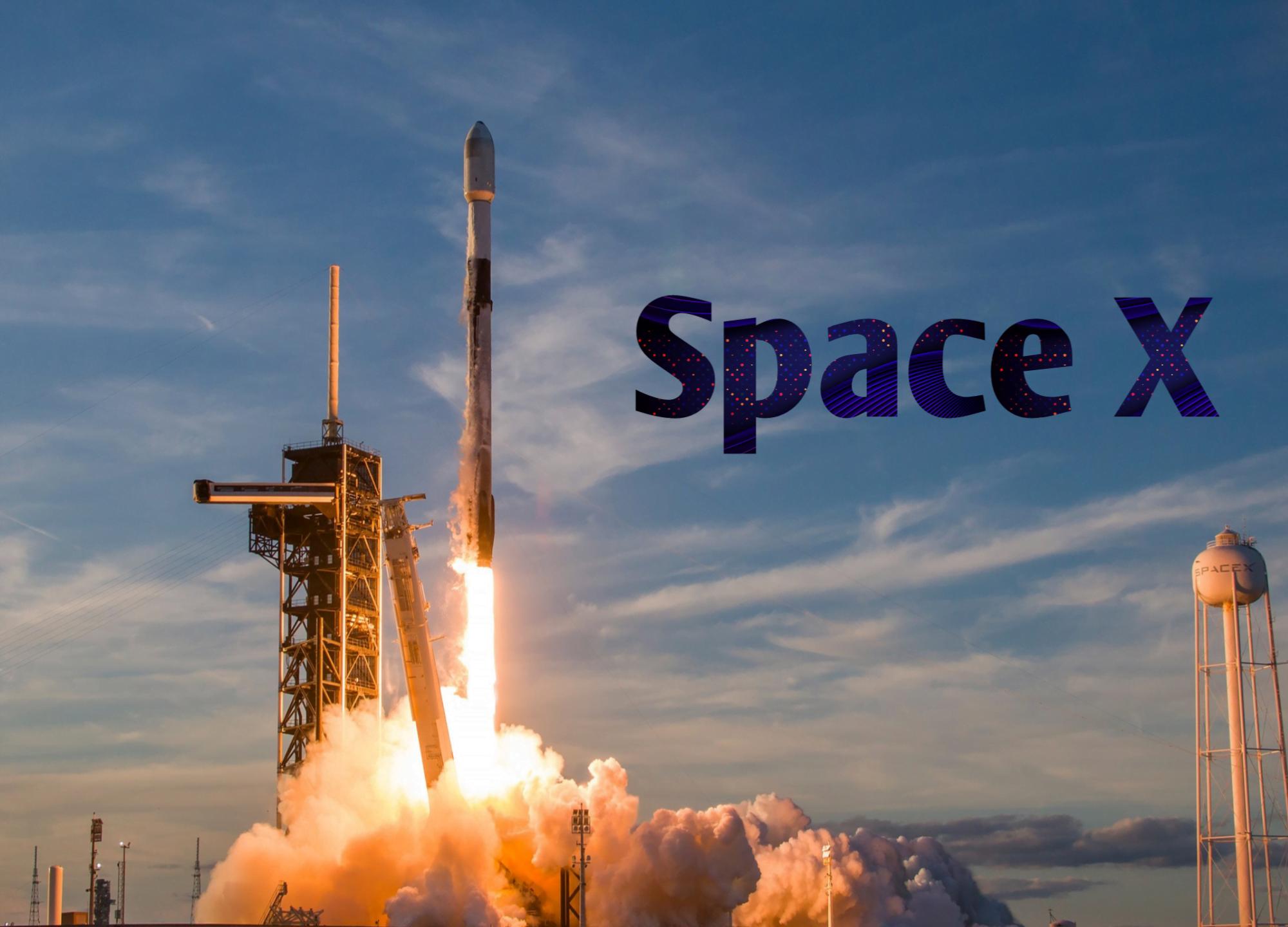SpaceX, a name synonymous with cutting-edge space technology and innovation, has once again captured the world’s attention with the launch of their latest space rocket. This new launch marks another milestone in the company’s mission to revolutionize space travel. Whether you are a space enthusiast, a student, or simply curious about the latest advancements in space technology, this article will provide you with all the essential information in an easy-to-understand format.
Introduction to SpaceX
SpaceX, founded by Elon Musk in 2002, is a private American aerospace manufacturer and space transportation company. The company’s ambitious goals include reducing space transportation costs to enable the colonization of Mars. Over the years, SpaceX has achieved numerous milestones, including the first privately-funded spacecraft to reach the International Space Station (ISS), and the development of reusable rockets.
Overview of the Latest SpaceX Rocket Launch
Key Details of the Launch
| Detail | Information |
|---|---|
| Rocket Name | Falcon 9 |
| Launch Date | June 6, 2024 |
| Launch Time | 3:22 PM EDT |
| Launch Site | Kennedy Space Center, Florida |
| Payload | Starlink Satellites and NASA Research Equipment |
| Mission Type | Satellite Deployment and Scientific Research |
| Rocket Reusability | First stage reusable, successful landing on drone ship |
Significance of the Launch
The latest launch of the Falcon 9 rocket is significant for several reasons. It underscores SpaceX’s continued commitment to improving rocket reusability, reducing the cost of access to space, and supporting both commercial and scientific missions. This particular mission involves deploying Starlink satellites, which are part of SpaceX’s ambitious plan to provide global broadband internet coverage, and carrying NASA research equipment, which will aid in various scientific studies.
Detailed Breakdown of the Falcon 9 Rocket

Design and Features
The Falcon 9 is a two-stage rocket designed and manufactured by SpaceX for the reliable and safe transport of satellites and the Dragon spacecraft into orbit. Here’s a detailed look at its design and features:
| Component | Description |
|---|---|
| First Stage | Equipped with nine Merlin engines, designed for high reliability and reusability. Capable of landing back on Earth for refurbishment and reuse. |
| Second Stage | Powered by a single Merlin Vacuum Engine, responsible for delivering the payload to its intended orbit. |
| Payload Fairing | The nose cone that protects the payload during ascent. Designed to split open and deploy once the rocket reaches space. |
| Interstage | Connects the first and second stages. Made of a strong, lightweight composite material. |
| Grid Fins | Four grid fins near the top of the first stage, used for steering the rocket back to the landing zone or drone ship post-launch. |
| Landing Legs | Four retractable legs that deploy just before landing to ensure a safe touchdown. |
| Avionics | Advanced electronics and software systems that provide guidance, navigation, and control of the rocket throughout its flight. |
Mission Objectives
The primary mission objectives for this launch were:
- Deploy Starlink Satellites: To add to the growing constellation of satellites aimed at providing high-speed internet across the globe, especially in remote and underserved areas.
- Support NASA Research: To deliver equipment that will be used in various scientific experiments and studies conducted by NASA, advancing our understanding of space and improving life on Earth.
The Importance of Reusability in Space Travel
One of SpaceX’s most revolutionary advancements is the development of reusable rockets. The ability to reuse the first stage of the Falcon 9 reduces the cost of launches significantly, making space more accessible. Here’s why reusability is crucial:
| Benefit | Explanation |
|---|---|
| Cost Reduction | Reusing the first stage of the rocket eliminates the need to build a new one for each launch, saving millions of dollars. |
| Increased Launch Frequency | With reduced costs and quicker turnaround times, SpaceX can conduct more launches in a shorter period, advancing their projects faster. |
| Environmental Impact | Reusability reduces the amount of rocket debris left in space and the environmental footprint associated with manufacturing new rockets. |
| Technological Advancement | Constantly refurbishing and reusing rockets drives innovation and improvements in rocket technology, enhancing overall performance and reliability. |
Starlink: Revolutionizing Global Internet
The deployment of Starlink satellites is a key part of SpaceX’s mission to provide affordable, high-speed internet to every corner of the globe. Here’s what you need to know about Starlink:
| Aspect | Details |
|---|---|
| Purpose | To provide global broadband internet coverage, particularly in remote and underserved areas. |
| Number of Satellites | Over 1,500 satellites currently in orbit, with plans for thousands more to achieve full global coverage. |
| Internet Speed | Promises download speeds of up to 150 Mbps and upload speeds of up to 20 Mbps, with potential for higher speeds in the future. |
| Latency | Aims for latency between 20 to 40 milliseconds, making it suitable for online gaming, video calls, and other real-time applications. |
| Availability | Currently available in select regions, with plans to expand coverage worldwide as more satellites are deployed. |
| Cost | Subscription plans start at $99 per month, with a one-time fee for the user terminal and mounting hardware. |
NASA’s Scientific Research on the Falcon 9
In addition to the Starlink satellites, this launch carried crucial research equipment for NASA. These instruments will support various scientific studies that aim to enhance our understanding of space and contribute to advancements in technology and healthcare. Some key research projects include:
| Research Project | Objective |
|---|---|
| Materials Science | Studying the behavior of different materials in microgravity to improve manufacturing processes on Earth and develop better materials for space missions. |
| Biological Studies | Investigating the effects of space travel on human cells and tissues, which can lead to better health care solutions for astronauts and new medical treatments. |
| Earth Observation | Using advanced sensors to monitor environmental changes on Earth, helping to predict natural disasters and understand climate change. |
| Technology Demonstrations | Testing new technologies that could be used in future space missions, including advanced propulsion systems and autonomous spacecraft navigation. |
The Future of Space Travel with SpaceX
SpaceX’s latest launch is just one step in a much larger vision for the future of space travel. Here’s a glimpse into what the future holds for SpaceX and space exploration:
Mars Colonization
Elon Musk’s ultimate goal for SpaceX is to make life multiplanetary by establishing a human colony on Mars. This involves developing the Starship rocket, which is designed to carry large numbers of people and cargo to the Red Planet. Key milestones in this journey include:
| Milestone | Description |
|---|---|
| Starship Development | Creating a fully reusable spacecraft capable of carrying 100+ passengers to Mars. The Starship will be the largest and most powerful rocket ever built. |
| Mars Base Alpha | Establishing the first human settlement on Mars, complete with habitats, life support systems, and the capability to grow food and produce fuel. |
| Interplanetary Transport | Developing a sustainable transportation system between Earth and Mars, enabling regular travel for both cargo and passengers. |
| Terraforming Mars | Long-term plans to alter the Martian environment to make it more hospitable for human life, potentially involving the use of advanced technologies to create a breathable atmosphere. |
Moon Missions
In addition to Mars, SpaceX is also focused on lunar exploration. They are working with NASA on the Artemis program, which aims to return humans to the Moon and establish a sustainable presence there. SpaceX’s Starship is a key component of this mission, as it will be used to transport astronauts and cargo to the lunar surface.
Commercial Space Travel
SpaceX is pioneering commercial space travel, making it possible for private individuals and companies to explore space. The company’s Dragon spacecraft has already flown several crewed missions, and they have plans for more:
| Mission Type | Description |
|---|---|
| Tourism | Offering private citizens the chance to travel to space, including trips to the ISS and beyond. |
| Private Missions | Partnering with private companies to conduct research and commercial activities in space. |
| Space Stations | Developing new space stations and habitats for long-term human presence in orbit, which could serve as bases for scientific research and tourism. |
Advancements in Rocket Technology
SpaceX is continually advancing rocket technology to improve efficiency, safety, and performance. Some of the key areas of focus include:
| Area | Advancement |
|---|---|
| Propulsion Systems | Developing more powerful and efficient engines, including the Raptor engine used in the Starship. |
| Reusable Rockets | Enhancing the reusability of rockets to further reduce costs |




